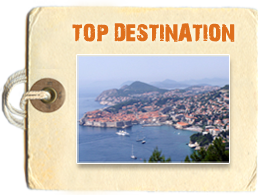
Croatia can be classified as a Pannonian-Adriatic country due to its Central European and Mediterranean position. In terms of International law, the traditional heritage has moved from a Middle Age Princedom (791-924 A.D.) and Kingdom (925-1102) to its current standing as the Republic of Croatia, declared on June 25, 1991. Croatia has 4.8 million citizens and the capital city is Zagreb. The official language is Croatian. The national currency is the kuna.
The surface area of Croatia totals 87,667 square kilometers, which is made up of 56,538 square kilometers of mainland (65%) and the coastline - both internal and territorial seas - of 31,139 square kilometers (35%). The climate is mainly continental but at higher altitudes, there is also a mountainous climate. In the coastal regions, slightly south of the island Rab, the climate is classified as Mediterranean. The northern Adriatic (Istria, Kvarner mainland and the islands) has a moderately continental climate, excluding the interior parts of the region. Vegetation cover is very diverse. Forests make up 36% of the surface area. In the continental regions, the dominant forests are English oak, hornbeam, beech, and fir.
The coastal belt and islands are characterized by alpine pine, downy oak, white and dark hornbeam and dense evergreen underbrush. Rivers belong to the Black Sea (62%) and Adriatic (38%) drainage basins.
source: MVPEI




